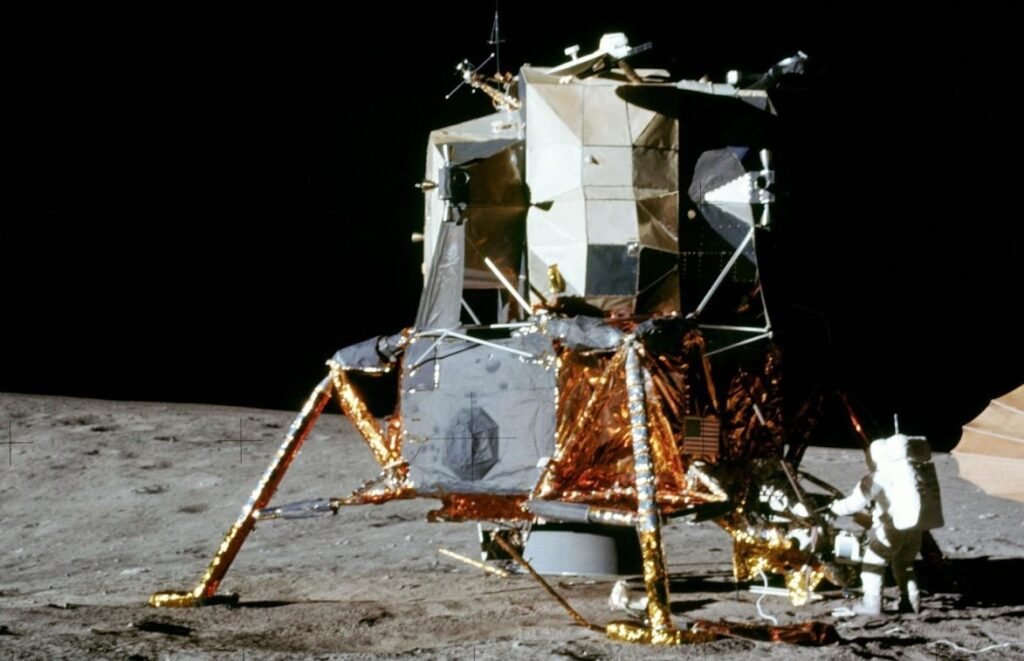The Peregrine lunar lander, a historic private mission to land on the moon, has suffered a major setback after losing most of its fuel due to a propulsion system failure. The spacecraft, which was carrying scientific equipment from NASA and other agencies, is now unlikely to achieve its original goal of landing on the moon next month.
The Peregrine lunar lander is a robotic spacecraft designed by the US-based lunar logistics company, Astrobotic. It is the first mission to fly under NASA’s Commercial Lunar Payload Services (CLPS) initiative, a scheme in which the space agency pays private companies to deliver scientific equipment to the moon.
The Peregrine Mission One (PM1) launched on Monday, January 8, 2024, from the Cape Canaveral space station in Florida, on board a Vulcan Centaur rocket. The rocket, a new type of methane-fuelled rocket built by the Boeing-Lockheed venture United Launch Alliance, marked its first launch with the Peregrine lander.
The lander was supposed to reach the moon, then maintain an orbit for several weeks before landing in a mid-latitude region called Sinus Viscositatis on February 23. The landing site was chosen for its scientific interest and accessibility.
The lander was carrying 28 payloads from NASA and other agencies, as well as universities, companies and individuals from around the world. Some of these payloads were designed to take readings that could minimize risks and lay some of the groundwork for NASA’s Artemis program, which hopes to enable a sustained human presence on the moon.
Among the payloads were:
- A physical coin loaded with one bitcoin, as a demonstration of the potential for lunar commerce.
- A Japanese lunar dream capsule that contains 185,872 messages from children from around the world, as a symbol of hope and peace.
- A piece of technology developed by UK scientists that can measure the moon’s magnetic field and its interaction with the solar wind.
- A device that can produce oxygen from lunar soil, as a proof of concept for future lunar habitats.
- A camera that can capture high-resolution images of the lunar surface and the Earth.

Peregrine Anomaly: A Critical Loss of Propellant
The Peregrine lander successfully separated from the rocket about 50 minutes after launch, at an altitude of 500 km (311 miles) above the Earth. It then entered a highly elliptical orbit to put it on course to its destination.
However, about seven hours after launch, the spacecraft encountered a problem that prevented it from reorienting its solar panels to point at the sun, so its batteries could charge. The ground-based engineering team managed to fix this issue, but discovered that it was caused by a failure within the vehicle’s propulsion system.
Further investigation revealed that the failure was causing a critical loss of propellant, which is essential for the lander to perform maneuvers and adjust its trajectory. The team tried to stabilize the loss, but realized that the situation was dire.
“Unfortunately, it appears the failure within the propulsion system is causing a critical loss of propellant. The team is working to try and stabilize this loss, but given the situation, we have prioritized maximizing the science and data we can capture. We are currently assessing what alternative mission profiles may be feasible at this time,” Astrobotic said in a statement.
The company also shared the first image of the Peregrine lander in space, which showed that its outer layers of insulation were crinkled. This could indicate that the lander experienced some heating or pressure changes during the anomaly.
Based on current fuel consumption, the company estimated that the thrusters of Peregrine’s attitude control system, which are designed to precisely align the lander, would only last for 40 more hours at most. This means that the lander has no chance of landing on the moon, and will likely crash on Earth or remain in orbit.
Peregrine’s Fate: A Disappointment for Lunar Exploration
The failure of the Peregrine mission is a disappointment for the private lunar exploration industry, which has been trying to achieve the first lunar landing by a private firm. Previous attempts by Israeli company SpaceIL and Indian space agency ISRO also ended in failure.
The failure is also a setback for NASA’s CLPS initiative, which aims to leverage the capabilities of the commercial sector to deliver scientific and technological payloads to the moon. The initiative is part of NASA’s broader plan to return humans to the moon by 2028, and eventually establish a sustainable presence there.
Astrobotic said it is working with NASA and other partners to understand the cause of the anomaly and learn from it. The company also said it is committed to continuing its lunar exploration efforts, and has two more missions planned for 2025 and 2026.
“We are incredibly proud of our team and the work they have done to get us this far. We are also grateful for the support and encouragement we have received from our partners, customers, and the space community. While this is not the outcome we hoped for, we are not giving up on our vision of making space accessible to the world,” Astrobotic said.
